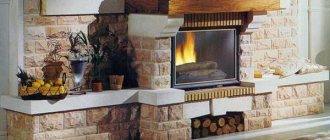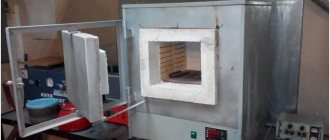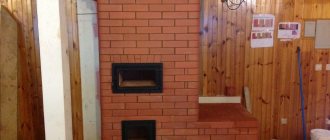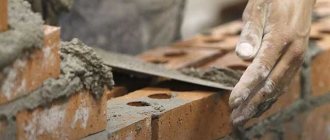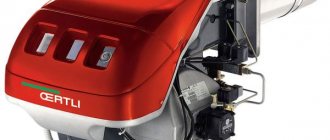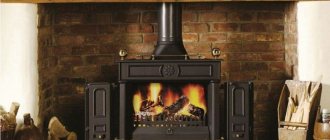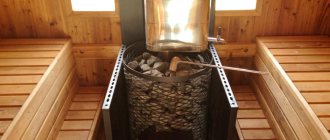DIY pool water heating
This is how one of the heat exchangers for the pool looks like This is a metal cylinder through which hot water flows. It is connected to a hot water source. Often this is a boiler hot water heating circuit or an instantaneous water heater. There may be other sources as well. Who will adapt how.
Here the question immediately arises: why do we need the heat exchanger itself? After all, you can take water directly from the pool, supply it to the heater and discard the heated one. In principle, such a scheme is possible, but the problem is that the water in the pool contains many different impurities: from chlorine and chemicals, to various tiny suspended particles. So with such a scheme, the heat exchanger will quickly clog.
Another point is that a reservoir of non-open air contains a sufficiently large amount of oxygen, due to which the heat exchanger in the boiler or flow heater will quickly oxidize and fail. That is why a small volume of coolant is driven along the loop with a special heat exchanger for the pool.
One of the types of heat exchangers is a coil. You can make it yourself, and also connect it to the system with your own hands. For those who made heating in the house, this is not a problem. But coils are only effective on small volumes. They will warm up a small pool for children in a short period, but they will not cope with a dozen cubes for sure.
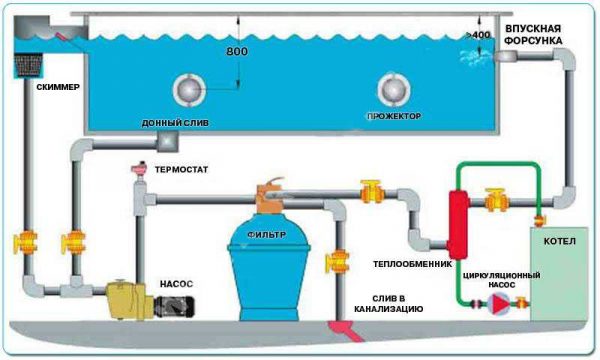
Scheme of the organization of water heating in the pool
The pool, even if not very large, is not cheap. But without water heating, it is far from always comfortable. Not everyone has the means or the desire to buy equally expensive devices in order to raise the temperature of the water. So homemade masters come up with different heaters for the pool, which do not require a lot of money.
The most affordable fuel in our country is firewood. And it would be strange if there were no means of heating the pool with wood. We have not met any industrial analogues, except perhaps to adapt a wood-burning stove with a water jacket for this business. And there are a lot of home-made units.


The basis of all water heating devices in a wood-fired pool is a coil
The main idea is that a metal coil is located inside the firebox; water from the pool is supplied to the inlet using a pump. Passing through the coil heated by the flame, it heats up, it is retracted through the second hose or pipe.


One of the devices for heating water in the pool with wood, made by hand
The main task is to select the rate of water supply so that it does not boil in the pipe under any conditions. Therefore, it is advisable to take a pump powerful enough. You can use a standard pump from the pool or a circulation pump.
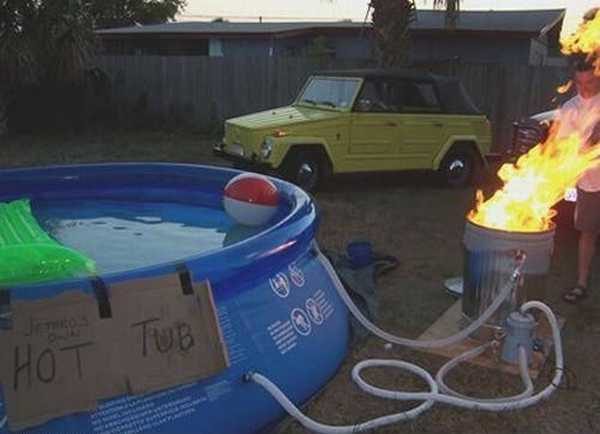

Quite risky, a bit funny
There are several such devices in the photo. In one, the coil is hidden in a tank in which a fire is made. The smoke is discharged through a hole in the lid. The system will be more efficient if you make a chimney. You can use the heat even more fully if you make a water jacket. It can be on the body, it is possible on the chimney, or it is possible - both there and there.
In another version, a square container is welded for a small inflatable pool. The principle is the same. The implementation is slightly different.
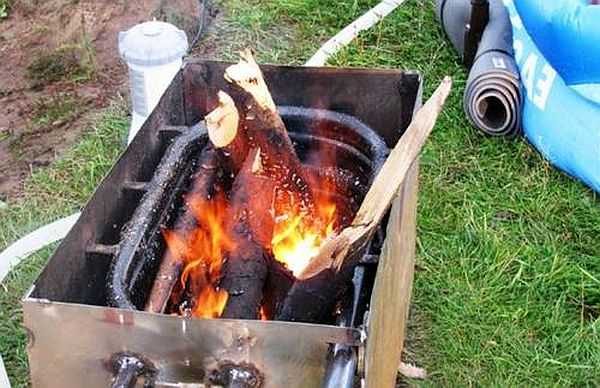

Square container, inside of which there is a coil and a fire
There is an even simpler option: a coil, inside which a fire is made. This device can even be used on a hike. Only in some way it will be necessary to solve the problem of removing hot water. Perhaps use heat-resistant hoses or a piece of reinforced plastic pipe for heating.
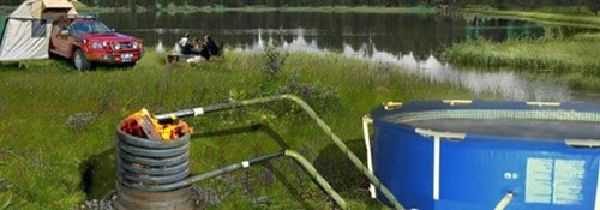

It is even very convenient for a hike or a trip - you are always provided with warm water
There is an example of making an electric pool heater with your own hands. A heating element was used for the boiler, an original design for fixing it in the body of an old foot pump was invented. See the video for details.
A very simple and fun way to make solar pool water heating more efficient. It requires a minimum of money and a little time. You will need plastic hula-hoops, thick black film, a soldering iron, a knife.
The idea is not new: a black film floating on the surface of the water heats up, it gives off heat to the water. Heating is more efficient as dark objects absorb more solar energy.
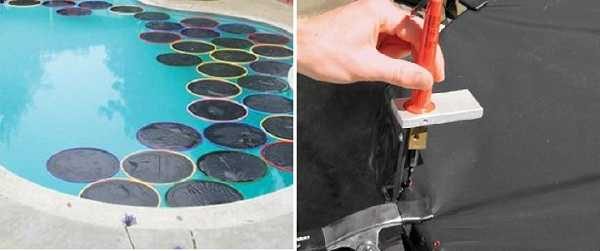

Very simple hula hoop solar collectors with welded black film
The work consists in the following: on the hula-hoop the film is evenly laid, with a soldering iron, point-wise melt the plastic and the film. It is advisable not to burn through the hoop, as it should float, not sink. They are melted in a circle, with a distance of 10-15 cm. The film should hold quite tightly. In the middle, you need to make several holes - it is undesirable for air to get in. Therefore, you need to turn the hoops with the side into the water on which the film is stretched.
These circles are laid out on the surface. The more area they occupy, the faster they warm up the water. It is easy to lay them out - they are scattered over the surface. Collect too - drove to one side, folded at the side in a pile.
Technical requirements
The heater is required for several functions:
- reducing fuel consumption;
- strong heating of stones, which are needed to generate steam;
- ensuring a high level of efficiency;
- maintaining the temperature regime.
Technical requirements for furnace equipment:
- The body must be solid, sealed so as not to let smoke into the premises.
- The minimum height of the ash pan from the floor is 15 cm.
- The materials used for the manufacture of the stove should not emit harmful substances when heated strongly.
Requirements for the installation of furnace equipment:
- The floor in front of the oven must be covered with a metal sheet.
- The base for the installation of furnace equipment must be reliable and stable. For a brick oven, it is better to make a separate foundation.
- There must be at least 50 cm of free space between the ceiling and the stove equipment.
- The surfaces around the oven must be covered with non-combustible plates.
- The place where the chimney passes through the ceiling must be closed with a special sleeve or a casing made of non-combustible material.
It is forbidden to install gas ovens by yourself. To do this, you need to obtain the appropriate permission. Installation must be carried out in compliance with many rules, taking into account certain features.
Electric heaters
Pool heaters from electricity are ordinary water heating elements with high-power thermostats. There are they of the accumulative type - this is when water is pumped into a sufficiently large tank, where heating elements are installed, and from there it is removed, but already with a much higher temperature.
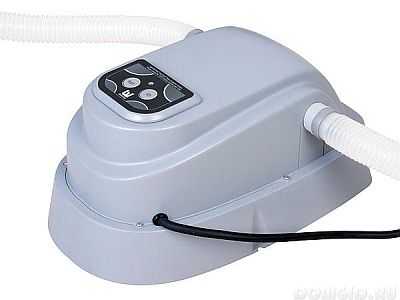

Instantaneous electric pool water heater
Electric heaters for swimming pools are also of flow type. It is built into the pool water treatment system after the filter. Purified water is supplied to it, and then, after heating, it enters the pool through the nozzles.
Electric heaters for swimming pools can operate from a 220 V or 380 V. This depends to a greater extent on power. It is calculated as follows: for outdoor pools, 0.5-1 kW is taken for one cube, for closed ones - 0.3-0.5 kW.
Since the volumes of water are large, the heating costs are also more than significant. You need to heat tons of water, which requires large capacities, and, accordingly, high consumption of electricity. Plus, not every site has the ability to additionally turn on 3-18 kW of electrical equipment.And this is in addition to everything that works in the house, as well as the equipment that is necessary for the maintenance of the pool, although it (not counting the electric water heater) "pulls" a little.
DIY pool water heating
Heat pumps extract heat from external heat sources, convert it and transfer it to the medium to be heated. To increase the temperature of the water in the pool, air-to-water devices are often used. In this case, energy is taken from the air and transferred to the water.
Outwardly, the device resembles an air conditioner. Most of these devices are so automated that, having connected it, setting the mode and the desired temperatures, they no longer touch it. Control is possible from a remote control or a panel on the body.


The heat pump looks like an outdoor unit of an air conditioner
Heat pumps operate from a 220 V network, consume 1-2 kW depending on the generated power. But energy in this case is not used to heat water, but not to pump heat from one medium to another - it is needed for the operation of the motor and compressors. Spending only 1-2 kW, you can get 5-12 kW - depending on the type of system.
As most of the automated and technologically complex devices, heat pumps cost a lot. About 130-180 thousand rubles.
Possible mistakes
Common mistakes:
- Installing the stove on a wooden floor.
- Use of a chimney cover without ventilation gaps. This disrupts the circulation of hot air.
- The use of low-quality stones for the heater.
- Wall upholstery with reflective screens made of flammable materials.
- Lack of funds to extinguish the fire in the bath.
Another common mistake that can lead to dangerous consequences is pouring concentrated essential oil on stones.
Solar systems
Only sunlight falling on the surface is not always enough to heat the water in the pool. But you can also use the sun's heat from other surfaces. For this, solar systems have long been used - collectors and vacuum tubes. Tubular heaters are more efficient, but collectors of sufficient area can provide the required temperature. The squares, however, need large, but after all, a lot of water is heated.
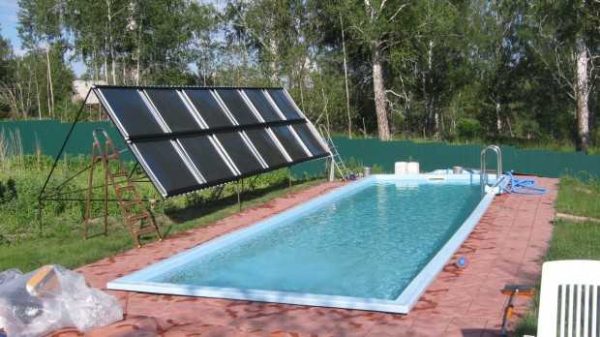

Solar pool heating is effective on clear days
For indoor pools, the dimensions of solar collectors should be about 60-70% of the surface of the pool water mirror, for open ones - 80-100%. Then the water will be warm. But only on a sunny day. This is one of the main disadvantages of solar systems. The second is the considerable cost of the devices. Smaller than heat pumps, but still sufficient, especially when you consider that larger devices are needed.
But solar collectors are easy to make with your own hands: materials are available, the technology is simple, there are many examples. One of them is presented in the video. But this area will be too small for this pool. In order for the heating to be significant, several of these are needed. Everyone can make such a water heater with their own hands. With no exceptions.
There is an inexpensive surface solar heater for the Intex pool. This is a two-layer black PVC film, welded in such a way that a labyrinth for water is formed in it. This mat, which floats on the surface of the pool, is pumped with water. Passing through the labyrinth, it heats up due to the fact that the black surface absorbs heat well. It comes out, already having a much higher temperature. For greater efficiency, water is taken from the bottom of the pool, where the water is colder.
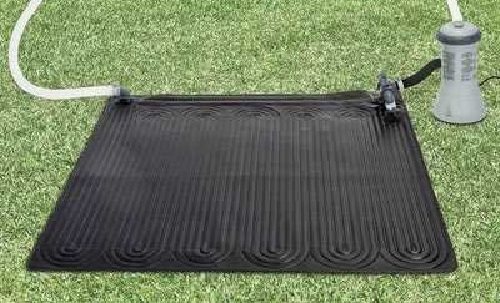

Floating rubber solar collector. Very inexpensive option
Such a water heater can be used in swimming pools that are located in open, sunny areas. Suitable for pools with a volume of no more than 30 m3, the temperature can increase by 3-5 ° depending on the weather.
Selection principles
When buying a metal stove, you need to pay attention to a number of factors:
- power;
- sizes;
- length of the combustion channel;
- the material from which the door for the firebox is made (it is better to choose a glass one);
- heater type - closed or open.
If there is no hot water in the bath, it is better to choose a stove with a hinged water tank.
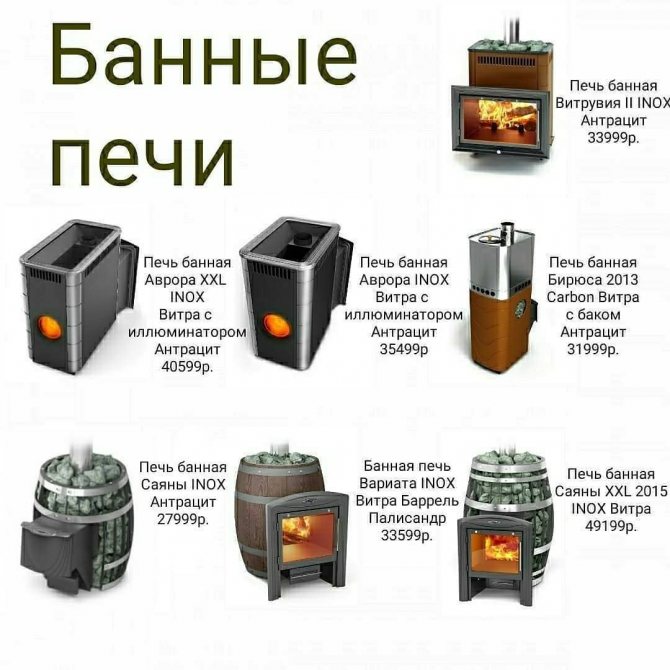

Popular models and prices
On sale you can find a large number of stoves, which differ in technical characteristics, fuel used, size, and the presence of decorative finishes. There are several popular stove models:
- Harvia Sound M45. The stove is from a Finnish manufacturer. It is an electric device suitable for heating steam rooms up to 6 cubic meters. Warms up quickly, takes up little space. Due to its low weight, the equipment does not need to erect a separate base. The heater can hold up to 25 kg of stones.
- Termofor Geyser 2014. Classic metal stove for a Russian bath. The body is made of alloy steel. Has a two-stage steam generation system. Suitable for heating steam rooms up to 18 m3.
- Thermophore Vitruvius. Sauna stove, which has a large fire door made of tempered glass. Outwardly, it looks like a fireplace. The heater can hold up to 45 kg of stones. Suitable for heating steam rooms up to 18 m3.
- Hephaestus PB-01. Suitable for heating several bath rooms at the same time. The total heated volume is up to 45 m3. The walls are made of cast iron up to 6 cm thick. Provides high efficiency, heats up quickly.
- Vesuvius Legend Suite. A cast iron stove that is suitable for heating bath rooms with a volume of up to 28 m3. The stove is large and has an unusual shape. It is located around the body, on top. Capacity - up to 180 kg of stones.
- Dionysus. It is made of steel sheets with a thickness of 5 mm. The design has two heaters. Their total capacity is up to 200 kg. Designed for heating bath rooms with a volume of up to 18 m3.
- Anapa. Manufactured from stainless steel sheets up to 6 mm thick. The stove is closed, it can hold up to 50 kg of stones. The combustion channel is remote. Suitable for heating rooms up to 16 m3.
The average price for a metal sauna stove is 30,000 rubles.
Advantages and disadvantages
Advantages of a metal stove with a sauna heater:
- fast warming up of the room;
- small size;
- little weight.
Disadvantages:
- Metal surfaces must be protected from rust formation.
- The metal stove cools down quickly.
Heat pumps for water heating
How to heat the water in the pool is clear. There are both factory-made and home-made heaters. But it is equally important to preserve it. Most of the heat is lost from the water at night. The main task is to reduce losses. They do this by arranging a canopy over the pool. It can be stationary, sliding, folding, etc.
If a canopy is, for some reason, not an option, you can reduce losses with a blanket. There are films floating on the surface. They have a lot of air bubbles and an opaque surface. The film is spread on the surface in the evening and removed after the water has reached a comfortable temperature.
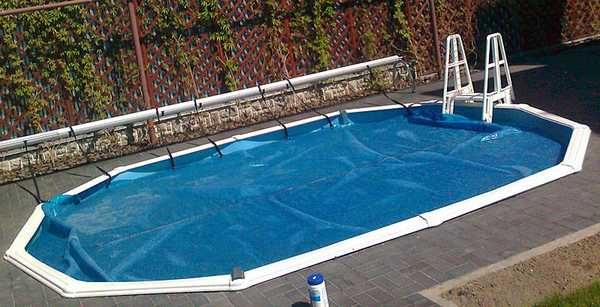

You can keep warm and speed up the heating of the water using a blanket that floats on the water.
In addition to floating films, there are awnings that are thrown over the structure from above. But they are quite inconvenient - even if the pool is three meters wide, it is quite problematic to pull or roll up the awning alone. And there are not always assistants. However, awnings can also be used - they are quite effective. Moreover, they can be easily replaced by, say, a piece of tarpaulin, thick (better opaque) film, etc.
For a rectangular pool, in order to straighten and assemble the awning, it was possible to attach light strips along one of the sides (short) with a distance of 1-1.5 meters. Then, holding on to the slats, it is easier to lay out and assemble the bedspread.
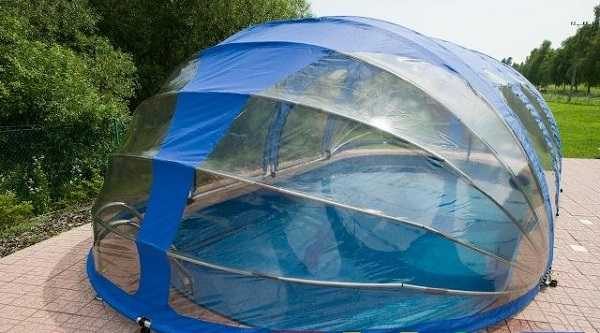

You can make something like this kind of shelter from a film and slats


